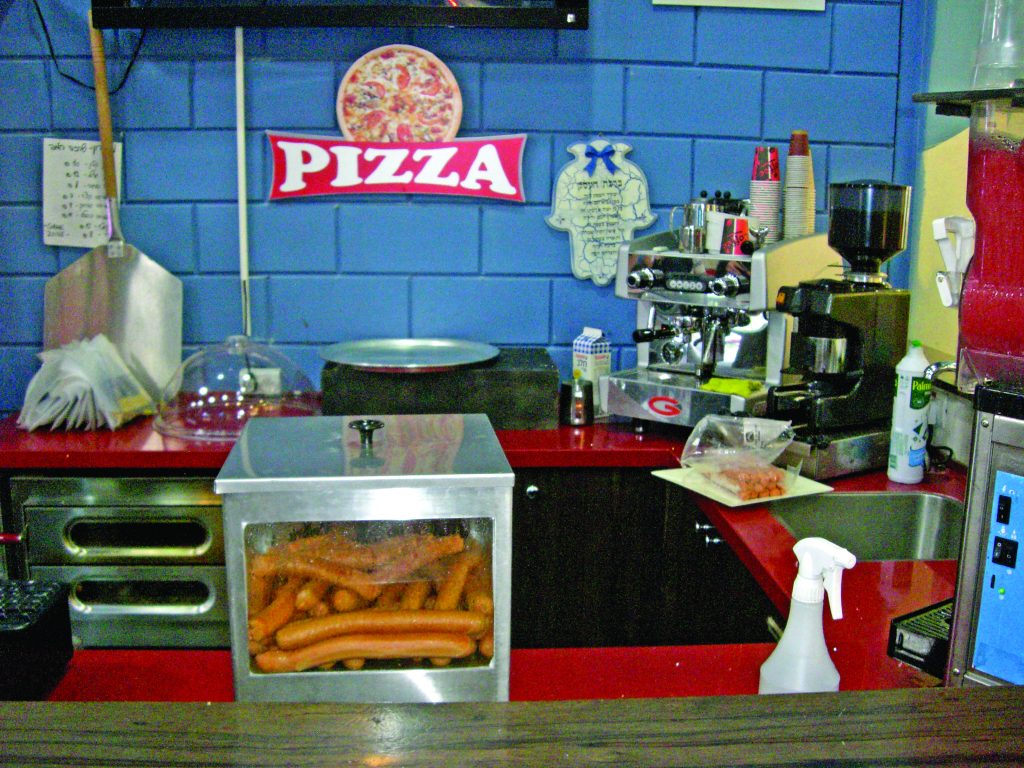
See the light and work with your locations to provide valuable marketing expertise and increase both of your bottom lines at the same time! Especially when it comes to smaller FECs, acting as a “marketing guru” to the location is a great way to ensure they don’t go out and buy their own equipment.
Maximizing Game Room Revenue – Part Three
Growing Profits by Working Together and Being Open to New Ideas

Frank Seninsky
by Frank Seninsky, President/CEO Amusement Entertainment Management (AEM) & Alpha-Omega Amusements & Sales
[Editor’s note: For a first-time read or a refresher, Part One can be found in the February 2016 issue and Part Two in March. Both are available online at the RePlay website:
www.replaymag.com/current_issue/frank.html.]
Let me share a real life scenario… Tony has an 8,000-sq.-ft. laser tag center that is grossing only $200,000/year in total revenue. He says he must substantially increase revenue to stay in business. When I asked him what his games earn, he shyly replied: “The 30 games gross about $1,000/week in quarters and my share from my game operator is about $300/week.” (Game operator Bill receives 40% for prizes off the top and then $600 is split 50% each.)
“That’s $33 a week per game!” I blurted out as I tried to bite my tongue. “Your cut is $10 per game and you are paying rent on 1,200 sq. ft. for the games? At your rent of $12/sq. ft., you’re paying $300/week just to pay for the game space! That’s just breaking even!”
In troubleshooting their business arrangement, we find that Tony’s annual rent is almost 50% of his gross revenue ($185,000 on laser tag + $15,000, his end, on the games). Maybe Tony has some marketing talent. After all, he is grossing $185,000 in laser tag from 15,000 customer visits ($12 per capita) which is a good start.
Maybe game operator Bill is a marketing guru? Let’s see… Bill’s games are grossing $1,000/week ($3.30 per capita – 300 players/week) and after his actual prize costs of $200, his share of net revenues is $500 or $17/game. Nah, Bill isn’t a marketing guru, at least not in this case, since his labor and parts costs to collect, service and repair the games has got to be more than $17/game.
There’s also a behind-the-scenes cat-and-mouse game at play here. Tony’s upset that Bill is deducting 40% of gross revenues for prizes so Tony’s decreased the number of points for many of the prizes in the hope that his customers will win more of them (especially since Bill is paying for them anyway). Bill certainly notices this and to counterpunch back, he’s reduced the number of tickets each game pays out so he can lower the prizes redeemed. While Tony and Bill are both good at this game, they may not realize that what they’re both really doing is cheating the players. This is perhaps one of the many reasons why game revenues are only $1,000/week. (If the revenues were higher, Bill could afford to upgrade some of the games, which he cannot currently afford to do.)
In this “comedic play,” we have an example of two business people who depend on each other and are in the same boat. The only problem is that their boat is sinking! If they team up and “plug the holes” by marketing together, chances are excellent that business will increase for both of them. But why is it so difficult for Tony and Bill to stop complaining about each other’s business practices and tear down the wall they have put up between them? Quite often, I find out that they’re afraid of trusting each other, learning how the other’s business really works, and figuring out what components are missing from their not-too-well-defined business arrangement.
“Afraid” is the Operative Word
Bill is afraid to convert to a tokens-based operation because he’s scared Tony will have all of the cash and that Tony won’t like the idea of handing Bill $700 each week while keeping only $300. At collection time, Bill does not “trust” that Tony will have $700 in cash to pay him and he doesn’t want to be in a subservient position.
Bill would love to be involved in getting more customers to play the games, but he and Tony both know that if they hand each person, for example, 10 quarters as a part of a party package, most of those quarters will not end up in the games. Who’s going to pay for these losses?
Tony knows that if he added a small food component, he could increase revenues. (This is possible even with a small 10’ x 10’ area using, as an example, a Quik n’ Crispy greaseless oven that requires no hood and spending no more than $20,000, including a freezer and soda fountain.) But Tony’s afraid of food. And Bill is afraid that if Tony adds food, he’d have to remove at least five of his games and forfeit the best game space in the facility.
Could it be that with a small food component, Bill’s fewer games could earn $2,000/week? Would the customers stay longer, spend more money, and bring more of their friends if Tony’s Laser Tag & Games became more customer friendly? I think we all know the answer to these questions is YES! With not too much effort, Tony’s Laser Tag & Games can gross $400,000 or more. All of this could be accomplished by a $20,000 investment on Tony’s part, and by Bill focusing on helping Tony market the facility as a whole. (Probably both Tony and Bill should attend Foundations University together?!)

A little “restaurant” can make a big difference to your bottom line! Don’t let customers leave your location to get a bite to eat. They don’t come back! Instead, work with your locations to put in a small food component so that food AND game money isn’t left on the table!
Food is Your Friend!
When you have an entertainment facility –– it doesn’t matter whether it’s small or large –– and you don’t offer food, or you outsource food to Joe’s Pizza up the block for your parties, you’re slowly killing your business. You’re taking a significant portion of your party profits and you’re giving it to the pizza guy, even if you believe he’s giving you a great deal. Remember, no matter how much fun your customers are having, when they get hungry and leave –– with money still in their wallets –– they’re not coming back to your place after they have eaten. Look at it this way: Your competitors are getting money that should be yours!
So many entertainment centers I see around the country are grossing from $400,000 up to $700,000/$800,000 and they’re leaving a lot of money on the table. And I’m not just talking about food revenue: By not offering a dining option, they’re leaving games revenue on the table, too! The longer someone stays in your location, the more they’ll spend across the board. (We’ll get more into food in a future installment.)
Open Your Mind to Other Ideas
Here’s another example of something simple we’re doing that increases revenue. We’re starting to put small-footprint attractions into children’s centers. We can create a climbing wall for smaller kids for less than $1,000 and easily make $50,000 a year integrating this attraction with parties.
And I don’t stop there. I market that space to a wider audience. I’ve taken adults and even teens and used that same kids’ climbing wall for team building events. I have the adults take their shoes and socks off, tie one hand behind their back, and put a blindfold on them to see how many inches they can get off the ground, making a contest out of it. Even in a children’s center, you can rent it out for $10,000-$15,000 for corporate team building.
Again, while it’s built for children’s activities, it can be so much more! It’s been done for many years, but it’s just not ever written about. It’s like one of the best kept secrets. Few in the industry want to share this kind of stuff, but it’s all part of the program our company offers and what we do to help market a location. Ideas like this can increase the bottom line by hundreds of thousands of dollars.
Like so many other concepts, it’s pretty simple. All you have to do is take the first step: start! So many of these ideas are cheap as hell or free. In my opinion, this is really what the industry should be focusing on instead of worrying about spending half a million dollars on big attractions. (That certainly works in a big center, but there are not too many of those.)
The Operator as a Marketing Guru
For the successful amusement operator of today, operating the games is probably the least significant part of their value to an FEC. The operator’s main value is in marketing the FEC, not just placing the games.
The operator has spent most of the last few decades becoming the best at running league programs for pool tables and darts. That is simply a marketing category to bring people into the facility and keep them there longer. These game operators have the basics down, so why don’t they go to the next level and become the marketing gurus for their locations and expand their role in that capacity? Your goal is to help the location bring more people through the door and encourage repeat visitation whether it be in a route location or FEC. In a sense, the operator can be a free marketing director for the location, something that most small businesses cannot afford, and both the operator and the location will benefit.
If the operator does this right, he’ll bring so much value to the FEC that it simply wouldn’t pay for the smaller locations to own their own equipment! They’ll be helping market the birthday party programs, the groups, the corporate sales and so on.
That’s easy to do and we do that with every one of our locations that permit us to be a part of the program. We have locations that started out making $4,000 a week/$200,000 a year on the games and within a few years of working with the location to help them market the whole facility, the games are doing $1 million and the locations are doing well over $2 million.
This has been accomplished by using a debit card system, generating emails, doing all the marketing around town and cross marketing with many local businesses. It’s a whole marketing program, and it’s every day.
As a word of caution, I’ve noticed that some game operators buy the debit card system, keep it to themselves and do pretty much nothing with the information, sometimes not even giving the location access to all of the valuable reports. All this does is build a wall between the two “partners in profit” much like the one between Tony and Bill. The right hand doesn’t help the left hand.
When this happens the game operator’s focus may be on making the games earn as much as possible, but sometimes at the expense of the whole facility. It’s so much easier to work with the FECs and locations to help them make more money and be more successful.
As a business practice, I find it more beneficial to share the cost of a debit card system with the FEC because then both parties have a vested interest in using it for the benefit of the entire FEC. Doing so also frees up an additional $30,000 or so for us to add to the new games budget. That means we can buy more of those expensive games that will generate increased revenue for the FEC from the get-go.
This is a good place to end Part 3 of this series. By the time you read this, I will be getting ready for my three full days and two evenings mentoring Tony and Bill, along with the other five speakers, at Foundations Entertainment University (June 14-16 in Chicago). By the end, they both will receive their “Marketing Guru” degrees! If you’d like to learn more, visit www.foundationsuniversity.com.
Frank Seninsky is President of the Alpha-Omega Group of companies, which includes a consulting agency, Amusement Entertainment Management (AEM), two nationwide revenue sharing equipment suppliers, Alpha-Omega Amusements, Inc. and Alpha-BET Entertainment, and Alpha-Omega Sales, a full line game and related equipment distributor. A frequent columnist and speaker, he’s set up over 600 game rooms in his 47-year career, and has also held leadership positions in the AMOA and IALEI. He’s a founding member of Foundations Entertainment University and authors The Redemption & FEC Report e-newsletter and a blog at www.frank-thecrank.com. Frank can be reached by phone at 732/254-3773 or by email at [email protected]
(the website: is www.AEMLLC.com).




